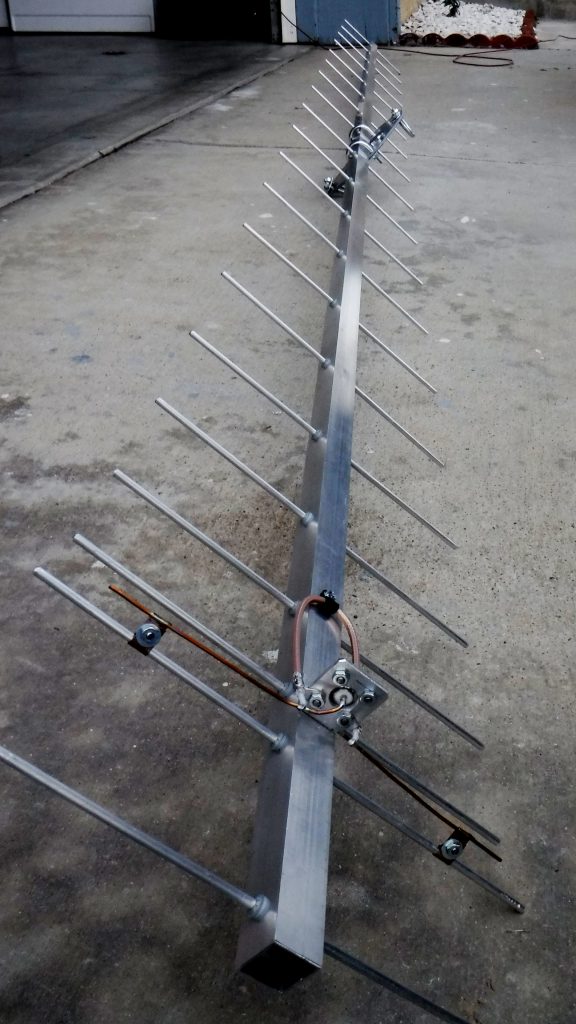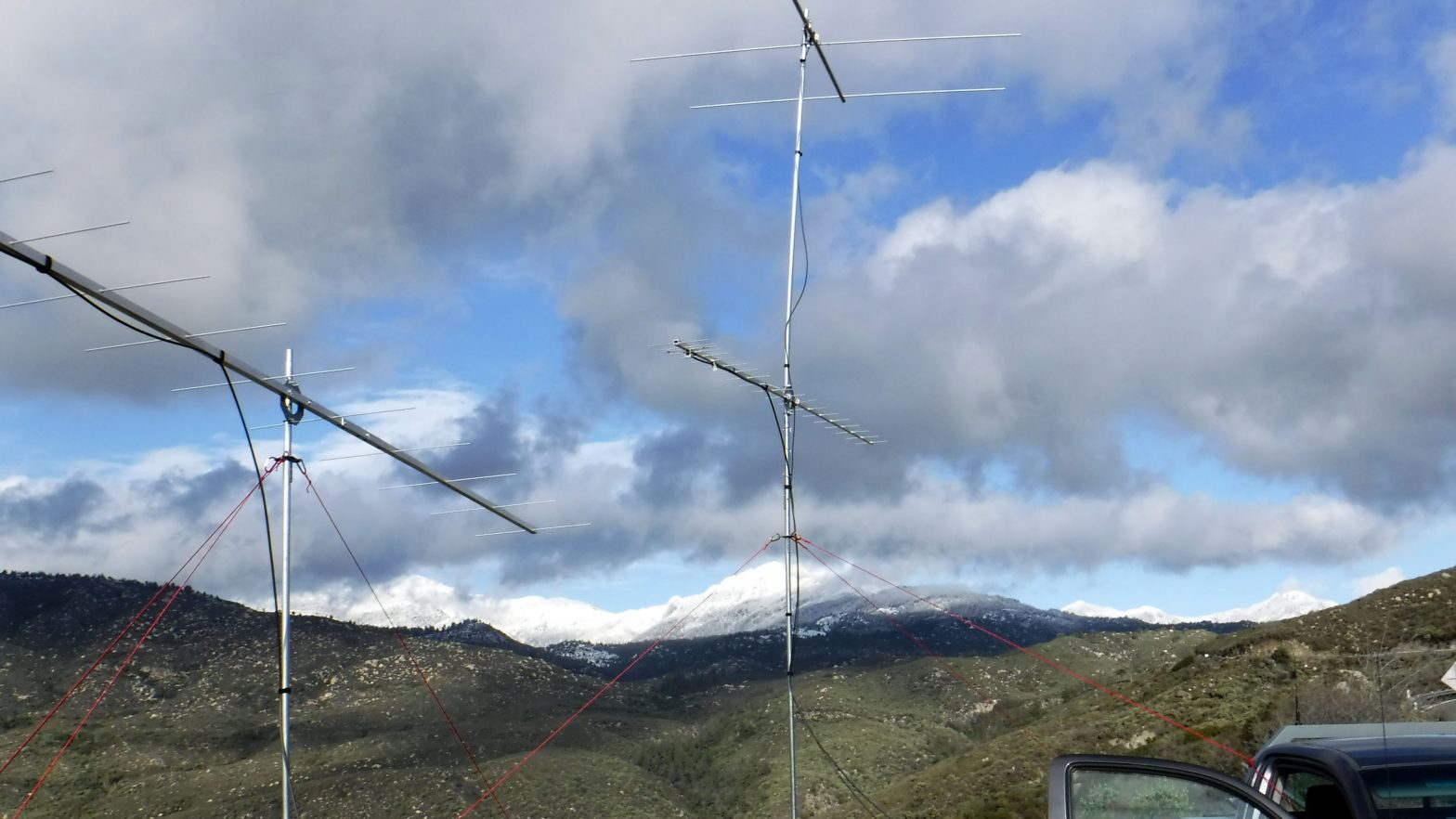Perhaps the greatest advantage on VHF is that you can build (or buy) antennas that would never be possible on lower bands.
Scale
Consider that on the 40 meter band a typical three-element Yagi is the size of a small house. By contrast, a three-element antenna of equal gain for the 2-meter band can easily be held in your hand.
Alternatively, you could easily fit a twenty (or more) element Yagi in the same space as that three-element HF model. When you start measuring gain in double digits things get really interesting really fast!
You are starting to get the picture. This opens up a lot of possibilities. Imagine being able to steer your signal this way and that, while also being ultra-selective with what you receive. You can bring in signals from far away, while at the same time rejecting interference from sources to the side.
Polarization
There is a LOT of confusion (and grumbling) about how amateurs are supposed to mount their antennas for VHF. As far as the physics go, there is no wrong way to mount an antenna. But as far as contacting other operators goes, you need to match their polarization.
If you are “cross polarized” to another amateur’s antenna then you are both in trouble. For linearly-polarized antennas a case of full cross polarization (90 degrees to each other) will cause a tremendous loss of signal – in some cases making communication impossible. This is why we all standardize.

Outside of Alaska the convention is to orient antennas horizontally for weak signal work using digital, CW, or SSB.
Vertical antennas are used for repeaters and local FM simplex. Exceptions occur, but these are the general rules.
Within Alaska the situation is a little simpler since band openings only occur on 6 M (as far as we can tell so far, anyway).
Back in old Alaska, if you had a VHF transceiver at all it was probably just for local FM contacts. Everyone settled on vertical polarization since that matches repeater antennas, and life was good.
Fast forward to today and we have all kinds of things that the early sourdoughs did not: more sensitive receivers, pre-amplifiers, low-loss coax, and best of all . . . computer modeled Yagi antennas.
These advances made it possible to regularly make contacts with stations outside Alaska on the 6 M band. And so, to prevent cross-polarization losses, all Alaska VHF-Up Group weak signal (SSB, digital) activities on 6 M use horizontal polarization.
For the other VHF and UHF bands you can set up with vertical polarization and you will be good to go.
6 Meter Antennas
On this band Yagi antennas are manageable, but only barely so. Models with two to four elements can be set up easily on a rooftop. The same models are also practical for setting up in the field. A two-element model is especially portable for rover use or in VHF contests, and does not require any special support other than a light tubular mast and tripod.
2 M & 70 cm Antennas
On these bands everything scales down smaller and smaller, which makes equipment even more portable. Yagi antennas with anywhere from three to ten elements can be easily mounted on rotators for rover use in contests.
Likewise, even 15-20 element designs are practical for roof mounting at home. This makes for a powerhouse of a home station, especially if your home is in an area clear of obstructions.
Three-element antennas on 2 M are easy to hand hold, as are up to five-element models on 70 cm. Nothing helps ensure a successful Summits on the Air activation like a gain antenna!

Microwaves
Once you get into this frequency range even more designs become possible. Loop elements, repurposed TV dishes, horns, and corner antennas all offer opportunities for immense gain and pinpoint directivity. The sky is the limit with these bands.
Now that you have the radio and antenna figured out you will have to connect the two. That’s where coax comes in, but there are some special considerations to keep in mind when using coax above 50 MHz.
